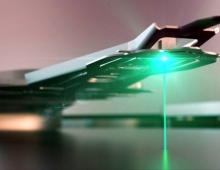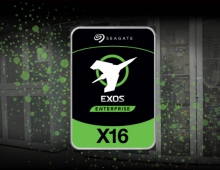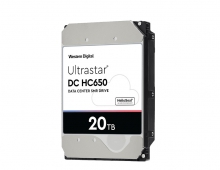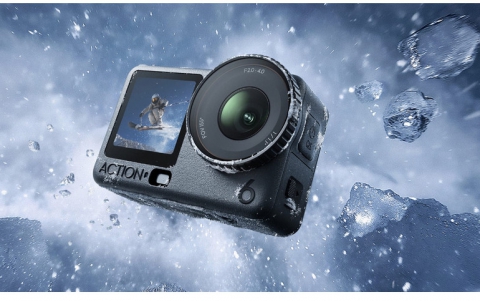
Nickel 'nanodots' Could Mean Tiny Hard Drives
Nanoscopic dots of nickel that could be used to store terabytes of data in a computer chip just a few centimetres wide have been created by US researchers.
Each "nanodot" consists of a discrete ball of several hundred nickel atoms and can have one of two magnetic states. This allows them hold a single bit of information, as a "1" or a "0".
In a conventional computer hard drive, information is stored on a disk coated with a magnetic material, and bits must be far enough apart not to interfere with each other. Nanodots should allow bits to be packed closer together as the dots are discrete units that are not structurally linked.
Ashutosh Tiwari and Jagdish Narayan at North Carolina State University have created nickel nanodots measuring about 5 nanometres in diameter - about 10 times smaller than those previously produced.
Pulsed laser
The researchers used a pulsed laser to heat nickel until it turned into plasma - an amorphous form of matter with positively and negatively charged atoms. In this form, the nickel rearranged itself on two different substrates - aluminium oxide and tin titanium nitrate - as uniform dots.
The dots arranged themselves at a density that would, theoretically, allow about five terabytes of data - five thousand gigabytes - to be packed into computer drive roughly the size of postage stamp. "Now the aim should be to integrate these nanodots with silicon chips," Tiwari told New Scientist.
But others remain more cautious about the potential of the technique. "It sounds very promising," says Mark Welland, directory of Nanoscale at Cambridge University in the UK. "But there's a big difference between having 5 nanometre dots and having them in the right structure on a surface that can be used as memory."
Easy assimilation
Welland says any new memory technology will struggle if it means completely rethinking the way computer memory already works. "Whichever technology can be most easily assimilated will win," he says.
Narayan concedes that several problems still need to be overcome. For example, he says, it is important to find an alternative to nickel, as this has to be cooled in order to work effectively as a magnetic memory. But he remains confident that the method has potential.
The fabrication technique could perhaps be used in other ways. It was also possible to arrange the dots in three dimensions within a substrate. The pair found the nanodots could be arranged in a uniform manner within the crystalline structure of tin titanium nitrate. In theory, this could strengthen the crystal lattice of a molecule, perhaps leading to the development of novel, super-strong materials, Narayan says.
The research will be published in the September 2004 edition of Nanoscience and Nanotechnology.
From NewScientist.com





















